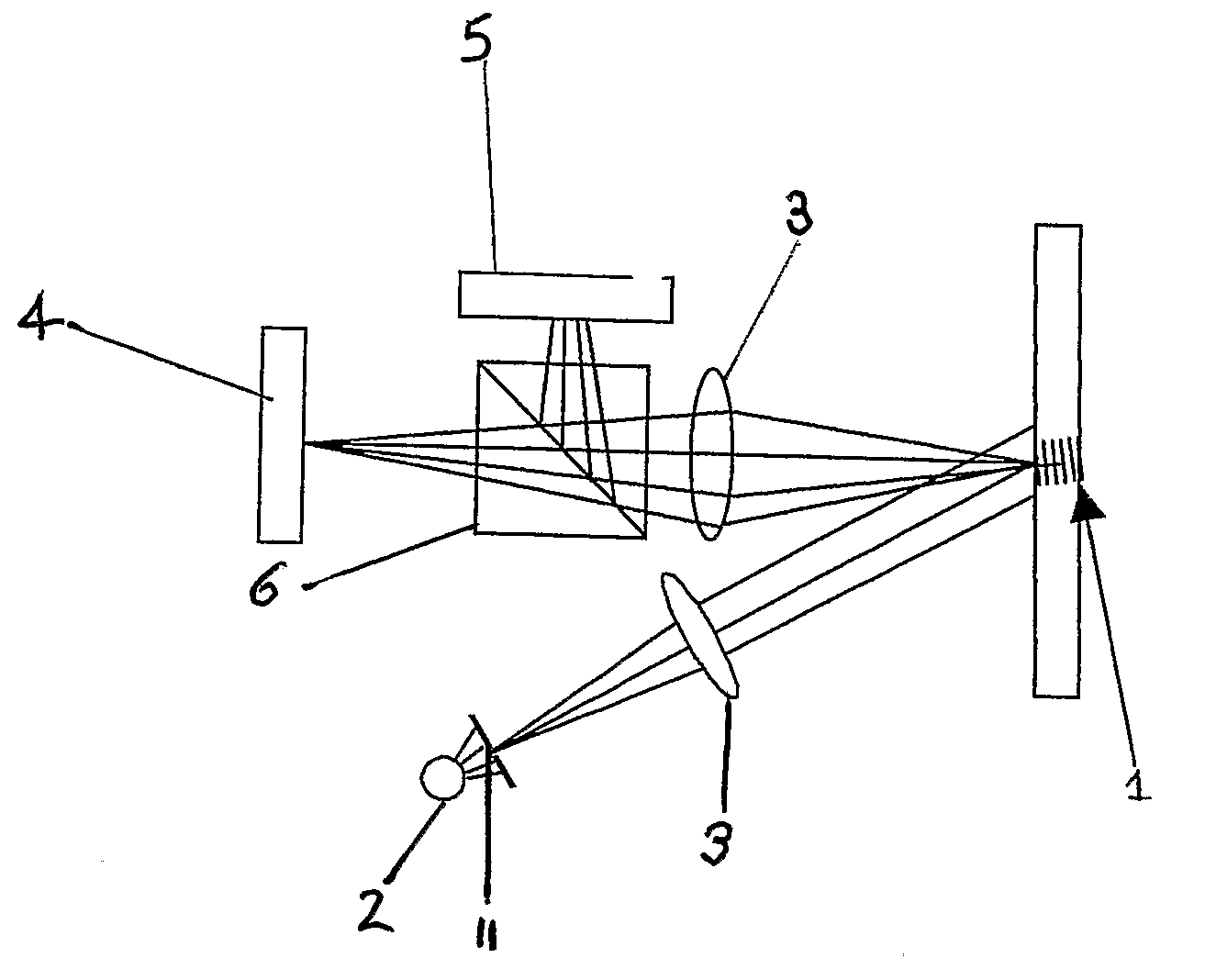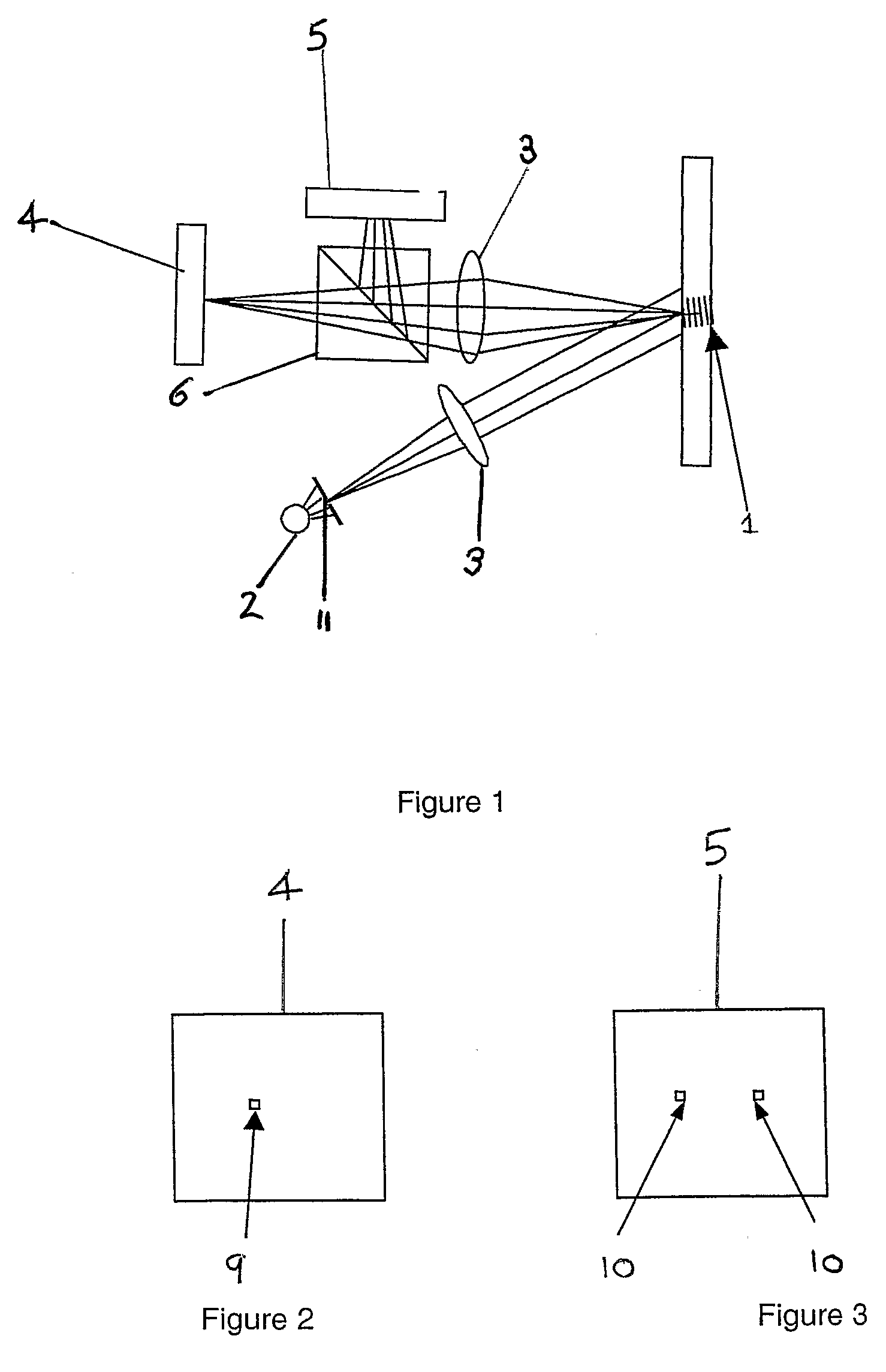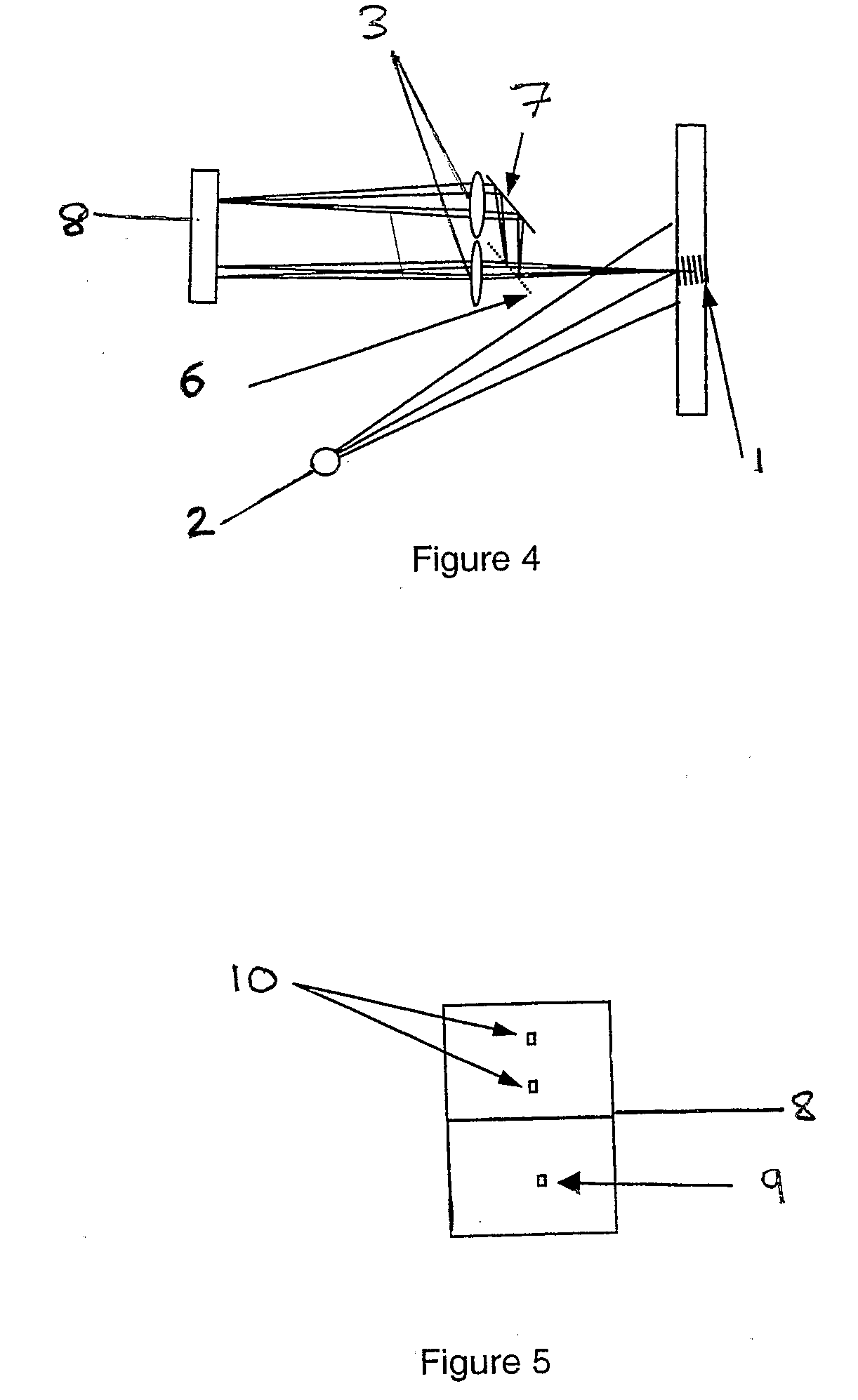Holographic Sensors and Their Uses
- Summary
- Abstract
- Description
- Claims
- Application Information
AI Technical Summary
Benefits of technology
Problems solved by technology
Method used
Image
Examples
Embodiment Construction
[0019]In this specification, the term holographic sensor means a holographic element made up from a support medium with a hologram therein. The hologram can be dispersed in or on part of or throughout the bulk. The support medium interacts with a stimulant resulting in a variation of a physical property of the medium which induces a change in the optical characteristic of the hologram.
[0020]The hologram is a three-dimensional distribution (modulation) pattern which is a physical record of an original interference pattern and can be generated by the diffraction of light. Peaks of modulation are referred to as “fringes” and can be formed from silver grains. The hologram acts as a diffraction grating to filter light in accordance with the Bragg equation and variations in the physical properties of the support due to the interaction with a stimulant can alter the fringe separation, leading to a change in wavelength at a fixed angle of incidence or change in intensity at monochromic peak...
PUM
 Login to View More
Login to View More Abstract
Description
Claims
Application Information
 Login to View More
Login to View More - Generate Ideas
- Intellectual Property
- Life Sciences
- Materials
- Tech Scout
- Unparalleled Data Quality
- Higher Quality Content
- 60% Fewer Hallucinations
Browse by: Latest US Patents, China's latest patents, Technical Efficacy Thesaurus, Application Domain, Technology Topic, Popular Technical Reports.
© 2025 PatSnap. All rights reserved.Legal|Privacy policy|Modern Slavery Act Transparency Statement|Sitemap|About US| Contact US: help@patsnap.com



